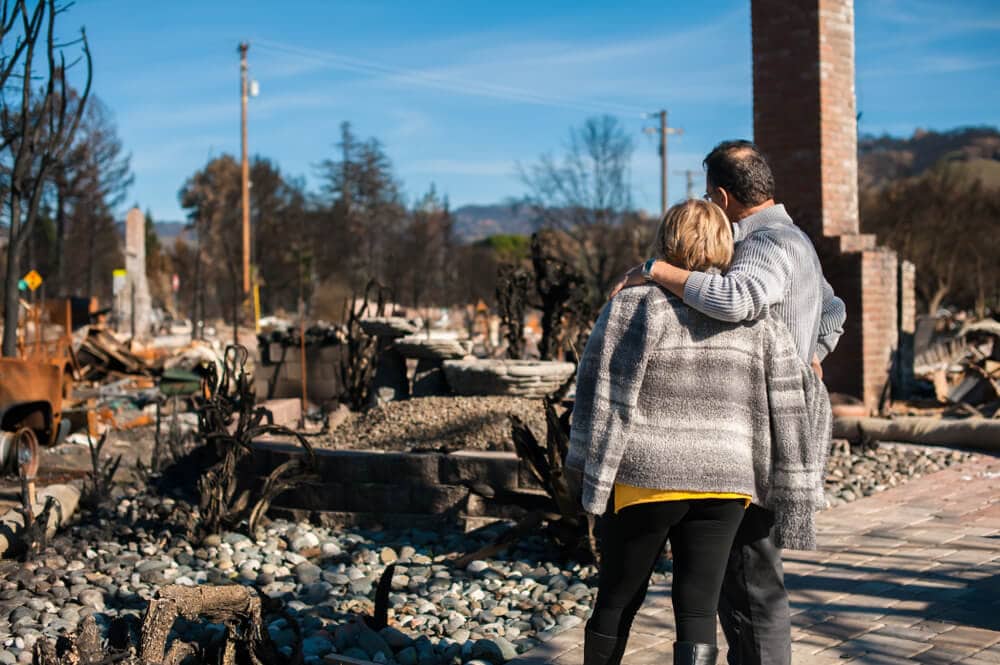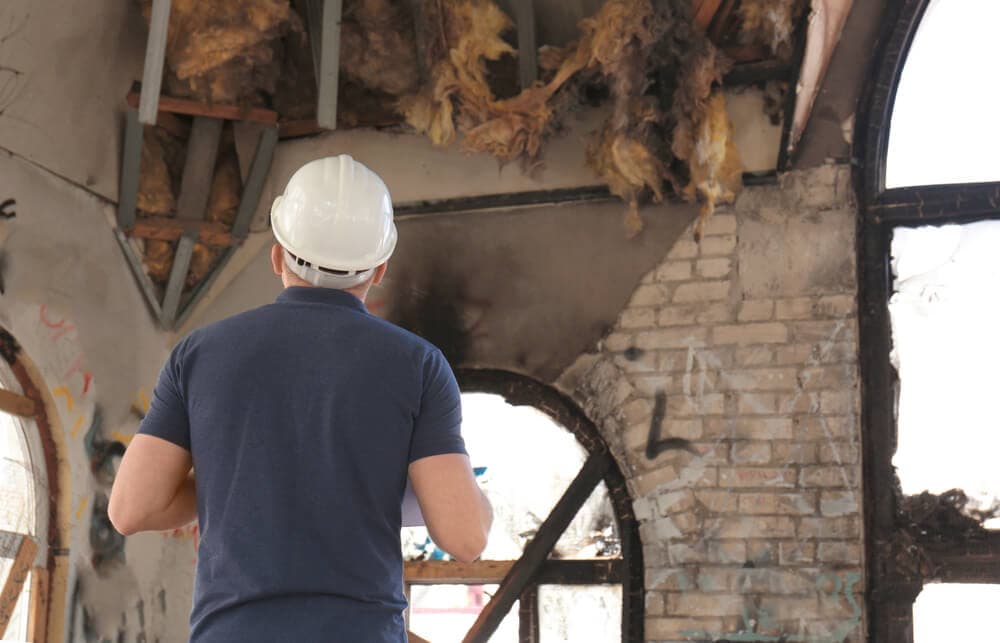What Happens If Your House Is a Total Loss?
When faced with smoldering ruins after a fire in California or a collapsed house after a tornado, many people stand in stunned disbelief, grateful to be alive but devastated at their sudden loss… their home has just been wrecked.
To make the most out of a seemingly impossible situation, you’ll want to know what to do if the absolute worst thing happens to your home.
Chances are that you rely on good homeowners insurance to pay for major damages to your house. However, the average person has no idea what their first step should be if their home ends up being a total loss.
Do you know what to do and how to take full advantage of total loss homeowners insurance? Keep reading to discover everything you need to know.
Navigating the Aftermath of Disaster
Before you worry about filing any total loss home claims, you need to first make sure you and your family are safe. Many such losses occur thanks to unexpected weather events (one of the major reasons to consider storm insurance) or devastating house fires. In situations like this, safety should be your first focus.
Afterward, though, you will need to speak to your carrier. Use the rest of this guide to discover what happens when your house is a total loss.
Understanding Total Loss Home Claims
While the term “total loss” may seem self-explanatory, the truth is that the words in your policy can be difficult to understand. Fortunately, once you understand the terms actual loss and home wrecked, you’re on your way to knowing what to expect when you file an insurance claim.
Defining Total Loss in Home Insurance
On the most basic level, the term “actual total loss” means your insurer considers the house beyond repair. This wording is used when the house cannot be repaired so that someone could reasonably live there. On the bright side, this usually means you can expect to get the maximum payout for your insurance claim.
The Difference Between Partial and Total Loss Claims
To your carrier, the damage to your home may be considered a “partial loss” if the repair cost is less than the home’s overall value. In other words, if the house can be repaired to a livable status for a lower price than it takes to completely replace it, this is the choice your carrier will make.

Preparing for a Total Loss Claim
Filing for a total loss is often easier said than done. That is because there are many steps, including extensive documentation on your part. The steps below will guide you through what to do next to maximize your chances of getting a full payout.
Essential Documentation for Filing a Total Loss Home Claim
To successfully file a claim, you also need to document the damage to your house to the best of your ability. Begin by taking high-quality photos of the inside and outside of the structure to document the damage. You’ll want to do this as soon as it is safe to do so.
It will help with your claim if you have estimates from local professionals about how long it will take to repair the house and the total cost estimates. The latter is very important because many damaged homes could theoretically be repaired, but the repairs would cost more than the value of the house. When this is the case, the carrier considers the house a total loss.
Conducting Your Own Inventory – A Step-by-Step Guide
You will also need to take photos of any personal items that were damaged or destroyed. Begin categorizing which things can be repaired and which are completely beyond repair.
When it comes to personal property, write down as many details as possible (name, make, model, etc.). You will also need to list how much it would cost to replace all unsalvageable items. If you have receipts, use them to help prove the cost of the damaged items. Otherwise, conduct internet research to discover the current cost of replacing said items.
The Settlement Process Simplified
The goal of any insurance claim is to get the best payout possible—especially if you’re looking to buy a new home. Getting a good payout becomes easier with homeowners insurance, and the process is relatively straightforward.
How Insurers Calculate Total Loss and Determine Settlements
Carriers will calculate whether the home can possibly be repaired; if not, it is typically considered a total loss. What kind of settlement you get depends entirely on the exact insurance arrangement you have with the company.
Replacement Cost vs. Actual Cash Value – What’s Covered?
Most homeowners insurance plans promise to pay out the actual cash value of a devastated home. This means determining the current value of the house, which may work for or against you depending on the housing market.
Some insurance agreements cover the actual replacement cost of the home. This will pay (up to your coverage limits) the cost of replacing the house regardless of its current value. Such a plan is considered superior because you’ll recover your house regardless of the housing market.

Navigating Hurdles in Total Loss Claims
Just because your house has been nearly destroyed does not mean you will automatically receive a payout from your carrier. There are common challenges homeowners may face when filing. By understanding these challenges, you will better know what to do with your own claim.
Common Challenges Homeowners Face with Total Loss Claims
The most common hurdle homeowners face when filing a claim is poor documentation. If you do not have adequate documentation for all the alleged damage, it seriously jeopardizes the likelihood of getting a full payout.
The second major hurdle is not understanding the fine print of their policies. Worst case, you might be expecting more coverage than you actually have!
The final hurdle is dealing with a bad insurance company. Bad carriers may offer you unfair settlement amounts or act overly hostile during negotiations. Your best bet is to switch to a better carrier long before you file a claim.
Beyond Settlement: Rebuilding Your Life
Right now, you are focused on getting the best settlement. However, it is equally important to know how to rebuild your life from the wreckage of the house.
Making Smart Decisions About Repairing Versus Rebuilding
Depending on your agreement with the insurance company, you may have to decide about repairing versus rebuilding your home. Keep in mind that rebuilding almost always takes more time and money than expected, and repairing is typically the easier option.
Understanding Your Options for New Home Purchase After a Settlement
After the settlement, you may be shopping for a new home. Use this time wisely by considering if you need to upgrade or downsize your home and if you would like to move to a new area. Also, consider the market: In some cases, it may be worth renting a home for a while rather than buying a new house at inflated rates, at least until you understand housing market trends in California.
Protect Your Home with Affordable Homeowners Insurance in California
Now you know what happens if your house is a total loss. But do you know where to find the best and most affordable homeowners insurance?
Here at Cost-U-Less, we specialize in protecting homes just like yours. Ready to embrace a carrier you can trust when you need them the most? Call us at (800) 390-4071 or get a fast and free homeowners insurance quote online. You can also find a Cost-U-Less office near you.



